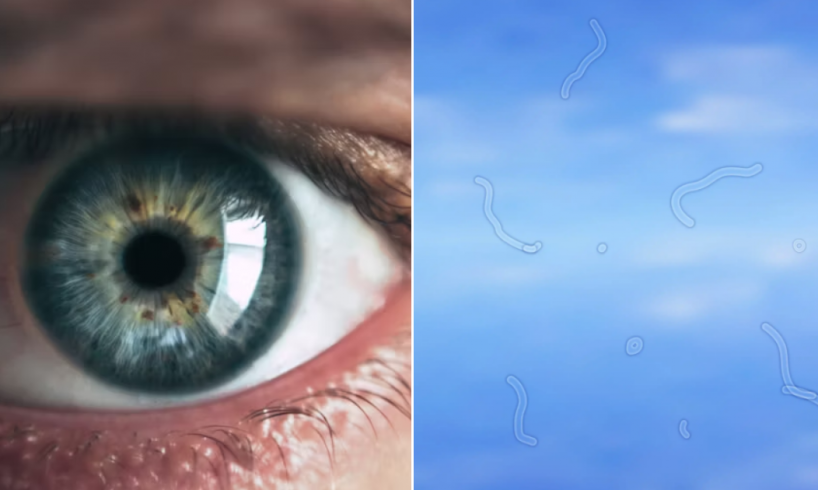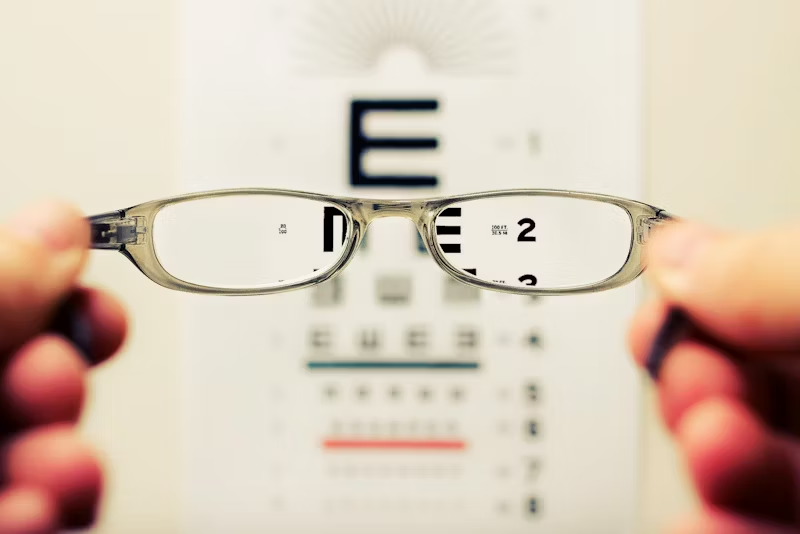
Eye floaters are common and usually harmless, but they can be surprising when you first notice them. They may look like squiggly lines, dots, or tiny cobwebs that drift across your vision—especially when you’re looking at something bright like a blue sky or white wall.
What Are Eye Floaters?
Floaters are small shapes that move across your vision. They shift as your eyes move and often seem to disappear when you try to look at them directly.

What Causes Them?
Floaters happen when the gel-like substance inside your eye, called the vitreous, starts to break down with age. Tiny clumps form and cast shadows on your retina—the part of your eye that helps you see. These shadows are what you notice as floaters.
Sometimes floaters can also be a sign of something more serious, such as:
- Eye infections
- Uveitis (inflammation inside the eye)
- Retinal tears or detachment (a serious condition needing urgent care)
Who’s at Higher Risk?
You’re more likely to get floaters if you:
- Are nearsighted
- Have had cataract surgery
- Have diabetes (which can affect the eyes)
- Are over 50 years old

When to Worry
Most floaters are not dangerous. But see an eye doctor right away if you suddenly notice:
- A big increase in floaters
- Flashes of light
- A dark shadow or “curtain” in your side vision
These could be signs of a retinal tear or detachment, which needs emergency treatment to avoid permanent vision loss.
How Are Floaters Diagnosed?
An eye doctor will do a dilated eye exam. This means using eye drops to widen your pupils so they can check the inside of your eye for any problems.

Treatment Options
In most cases, treatment isn’t needed—floaters often become less noticeable over time. But if they interfere with your vision, there are options:
- Vitrectomy – Surgery to remove the vitreous gel and replace it with a saline solution.
- Laser Therapy – Lasers are used to break floaters into smaller, less visible pieces.
Both come with risks like infection or retinal damage, so they’re only done for serious cases.
Simple Ways to Manage Floaters
If your floaters are mild, you can try:
- Eye movements – Looking up and down may help move floaters out of your central vision.
- Healthy diet – Eat foods rich in omega-3s, vitamin A, and zinc to support eye health.
- Avoid smoking – Smoking increases your risk of eye disease.
Prevention and Long-Term Care
You can’t always prevent floaters, especially with age, but regular eye check-ups can catch problems early. Dr. Rick Ansorge advises:
“If you notice sudden changes in your vision, get medical help right away.”
For most people, floaters are a minor annoyance. But staying aware and seeing your eye doctor regularly will help keep your eyes healthy.






